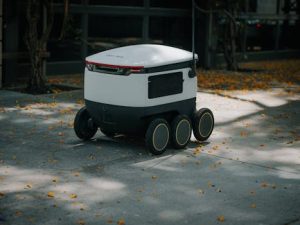AI-Powered Smart Assistants: How Alexa and Google Home Are Revolutionizing Appliances
The rise of artificial intelligence (AI) technology has had a profound impact on various industries, and the household appliance sector is no exception. With the introduction of AI-powered smart assistants, such as Amazon’s Alexa and Google Home, daily tasks have become easier and more convenient than ever before. These smart assistants have revolutionized the way we interact with our appliances at home, providing us with a hands-free and personalized experience. Let’s delve into the world of AI-powered smart assistants and see how they are transforming the way we use our appliances.
The Emergence of AI-Powered Smart Assistants
In recent years, the use of AI technology has become increasingly prevalent, and smart assistants have become a household staple. Companies like Amazon and Google have developed their own versions of these intelligent voice-activated devices, which are designed to make our lives more efficient and connected.
One of the main selling points of these devices is their ability to integrate with other smart home devices and appliances, making our homes smarter and more interconnected. Through voice commands, users can control various functions of their appliances, such as adjusting the temperature of their smart thermostats or starting the washing machine, all without lifting a finger.
The Benefits of AI-Powered Smart Assistants for Appliances
One of the biggest advantages of using AI-powered smart assistants with our appliances is the level of convenience they offer. For example, imagine being able to preheat your oven without even being in the kitchen or setting your coffee maker to start brewing before you even get out of bed.
Moreover, these smart assistants offer a hands-free experience, which is particularly beneficial for people with disabilities or those with limited mobility. With a simple voice command, they can easily control their appliances and make their lives easier and more independent. Additionally, incorporating AI technology into appliances can also improve their functionality, making them more energy-efficient and cost-effective in the long run.
How Alexa and Google Home Are Revolutionizing Appliances
With the integration of AI-powered smart assistants, appliances are becoming more intuitive and personalized to our needs. For instance, smart refrigerators can keep track of the food items inside and even create a shopping list for you. Or, with the help of machine learning, smart ovens can learn your cooking preferences and make adjustments accordingly.
Furthermore, smart assistants like Alexa and Google Home also offer a range of skills and apps that can be used with appliances. For instance, you can ask Alexa how much time is left on your dishwasher cycle or use Google Home to start your robotic vacuum cleaner. These added features make our daily lives more effortless and streamlined.
The Future of AI-Powered Smart Assistants and Appliances
The potential for AI-powered smart assistants in the appliance industry is vast, and we have only scratched the surface of what they can do. With the advancements in machine learning and natural language processing, these devices will become even more integrated into our daily routines and will continue to enhance our homes’ overall efficiency and connectivity.
We can expect to see even more appliances and devices being equipped with AI technology, making our homes smarter and more efficient. In the future, we may even see smart assistants collaborating with each other, allowing for a more seamless and interconnected user experience.
In Conclusion
AI-powered smart assistants have completely transformed the way we use and interact with our appliances at home. Their convenience, hands-free operation, and added functionality make them an indispensable part of our daily routines. With continued advancements in AI technology, we can expect to see even more exciting developments in the world of smart appliances, making our lives easier and more connected than ever before.









